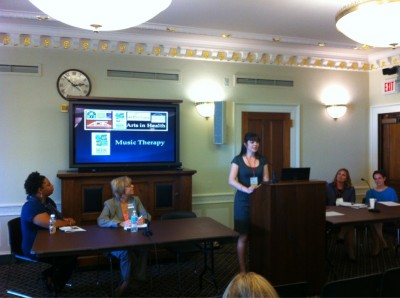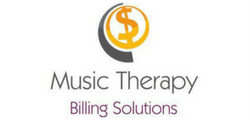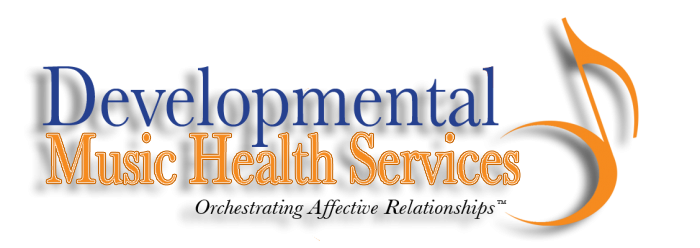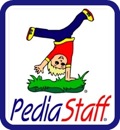I am fresh off of two back-to-back conferences. Last Thursday, I drove up to Iowa City for the annual midwestern regional music therapy conference. Drove back to Kansas City Saturday night–managing to avoid the nasty storms due to a tip from a friend–and hopped on a plane bright and early Sunday morning, bound for Washington DC. Spent Monday and Tuesday participating in Arts Advocacy Day and am now back home, glowing in the excitement and energy from this past week.
I am still processing everything that happened and imagine that, in the near future, I will share a coherent and intelligent-sounding post based on my experiences and observations. But for now, here are some random thoughts and observations, in no particular order:
- There are a lot of really smart people doing a lot of really cool things. Some are celebrities, some are assistants, some work behind-the-scenes, and some head up initiatives. But all of them have their own interesting story to share.
- There are few experiences more invigorating and inspiring than being around a group of people who are as passionate–or more!–about something as you are.
- You can’t beat the coffee at Java House in Iowa City.
- It’s interesting to watch and learn from others, specifically the way they communicate and share their ideas.
- Be very careful when wearing a small heel and walking on marble.
- It’s perfectly okay to read from a speech. If Maureen Dowd can do it (and boy was she wonderful!), so can I. Just make sure to look at the people in the room, too.
- I can still get nervous when talking about music therapy, even though I’ve talked about it hundreds, if not thousands, of times.
- It’s important to experience advocacy efforts that go beyond your circle of experience and your comfort level. National advocacy was new to me. Even though I didn’t talk a whole lot, I learned from just being there.
- I don’t think I’ll ever tire of talking about music therapy, nor of talking to music therapists about advocacy.
- Great connections can be made over a cup of coffee…and a glass of wine.
If you were following the action on Twitter (check out the #AAD12 hashtag if you haven’t yet), you knew that I talked about music therapy at an Arts in Healthcare briefing. Unlike most of my advocacy efforts, this was a prepared speech–a completely different experience for me! Here is what I said, for your reading pleasure (it may seem long, but it only took 6 minutes to read!):
Good afternoon. My name is Kimberly Sena Moore and I am a board-certified music therapist from Warrensburg MO. I am currently a first-year PhD student at the University of Missouri-Kansas City and serve as the Regulatory Affairs Associate for the Certification Board for Music Therapists. I am here today to tell you a little bit about music therapy, a profession you may have heard about through it’s connections with autism, aging, and Rep. Gabrielle Giffords.
Music therapy is an allied healthcare and education profession with a rich, 60-plus year history of improving the lives of individuals across the lifespan with a wide range of needs and exceptionalities. As defined by the American Music Therapy Association, music therapy is the clinical and evidence-based use of music interventions to accomplish individualized goals within a therapeutic relationship by a credentialed professional who has completed an approved music therapy program.
Music itself has an incredible ability to touch us emotionally, physically, cognitively, and socially. Trained music therapists are able to harness this power of music as we work to help an individual in whatever way he or she needs. I myself work with children who have experienced severe abuse and neglect, which leads to a variety of developmental delays and distorted ways of connecting with others. I am able to use music to help them get comfortable again in their own bodies, to help them develop healthy relationships with peers and adults, and to help them express difficult feelings in an appropriate way.
As I mentioned previously, music therapists work across the lifespan with a wide range of needs and exceptionalities. Perhaps you have heard some of the stories about how music therapy can help the growing aging population? Music can stimulate the memories and personalities of those with Alzheimer’s and other forms of dementia, causing someone who doesn’t interact or remember her family to start singing and tapping her feet to a familiar song. You will also find music therapy in hospitals and rehab settings. The unique way our brain responds to music allows a music therapist to help a person who has had a stroke re-learn how to walk and talk again. A trained music therapist can use singing to help rewire the brain for functional speech and can use rhythm to help coordinate a person’s walking pattern. We can also address pain and anxiety issues in a hospital setting. I used to contract with a medical facility in Loveland Colorado, where I kept track of a person’s perceived levels of pain and anxiety both before and after the session. A 30- to 45-minute music therapy session could reduce a patient’s perceived pain and anxiety levels by an average of almost 40%.
Music therapy can also be incredibly powerful for our children, who themselves are naturally creative and expressive. You may have heard of the growing autism rates in our country? A trained music therapist can use experiences involving singing, music-based social games, and instrument play to help a child with autism learn how to communicate, both verbally and nonverbally, and to learn how to interact with his or her peers.
Not any musician can be a music therapist, though. Qualified music therapists hold a bachelor’s degree or higher from one of over 70 academic training programs across the country. We are trained in music, science, and psychology in order to meet entry-level competencies in 3 areas: musical foundations, clinical foundations, and music therapy foundations. In addition, a trained music therapist will have at least 1200 hours of supervised clinical training. This occurs both as a part of coursework, as well as during a required six-month clinical training internship, which provides the music therapist-in-training deep, “real life” clinical experience.
Having met the educational and clinical training requirements just mentioned, a music therapist is eligible to sit for our national board certification exam administered by the Certification Board for Music Therapists. The CBMT is a nationally-accredited, non-profit credentialing agency that is the only organization to certify music therapists to practice nationally. Having passed the exam, a certificant then holds the Music Therapist-Board Certified (or MT-BC) credential. The music therapist remains competent with current and evolving clinical practice by getting his or her MT-BC credential re-certified every 5 years, either through re-taking the certification examination or by demonstrating completion of 100 or more hours of continuing music therapy education credit.
Finally, from it’s beginnings in the late 1940s, the music therapy profession has maintained a strong focus on supporting our work through research. The American Music Therapy Association publishes two different research journals and our research community is actively publishing and presenting their research all over the world. At my university alone, we have one professor researching the effectiveness of music with premature infants, one looking at music therapy and wellness in the growing aging population, and one investigating the effectiveness of music everywhere from pain management during dental procedures to how it helps those with dementia. Recent research of note in the music therapy literature includes a 2005 review of literature supporting the use of music therapy in hospice and palliative care, a 2006 study demonstrating the clinical potential for music therapy to help those with autism, and a 2011 Cochrane Review showing music therapy to be an effective treatment technique for cancer. We are also beginning to conduct cost-effectiveness research, which is indicating that music therapy treatment may result in fewer meds being needed, shorter hospital stays, and thus reduced costs for medical facilities.
In closing, through music’s unique ability to access our memories, touch our emotions, and move our bodies, the 5,300 board certified music therapists working in the United States are making real and lasting differences in the lives of thousands of Americans. This is true for Rep. Gabrielle Giffords, who reportedly credits music therapy with helping her to find her voice again, and it’s true for the real-life patient portrayed in the 2011 movie “The Music Never Stopped,” whose music therapy treatment helped him to reconnect with his family. As Sen. Harry Reid said during the 1991 Senate hearing on Music and Aging “Simply put, music can heal people.”



 orcid.org/0000-0001-8665-1493
orcid.org/0000-0001-8665-1493






{ 2 comments… read them below or add one }
Kimberly, wonderful article. I had seen the youtube video of Henry “old man in nursing home” and seeing the reaction from Henry when he listens to music of his era, was amazing. Music therapy is doing wonders for all ages and I am always learning about the benefits of music. Thank you so much for your article, I look forward to reading more.
I’m glad, Peta! Hope you keep coming back from more 🙂 ~Kimberly
You must log in to post a comment.